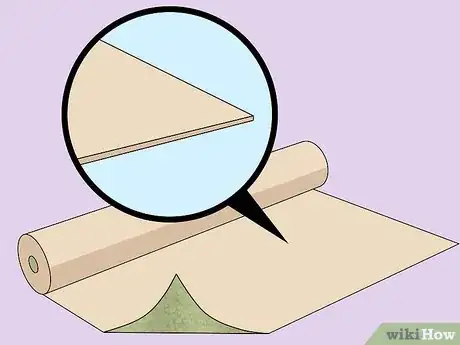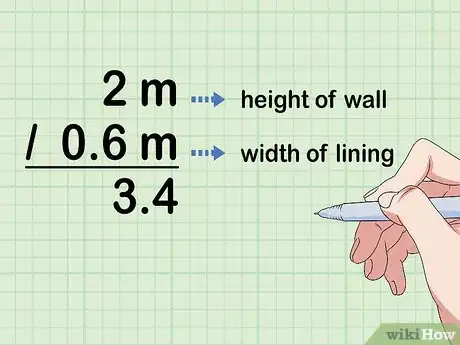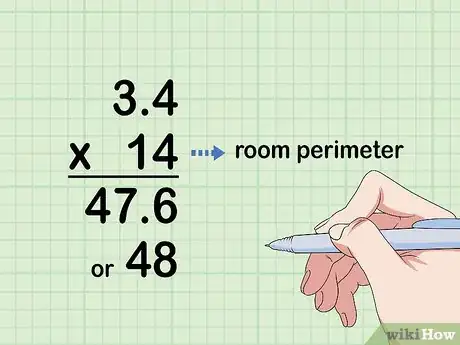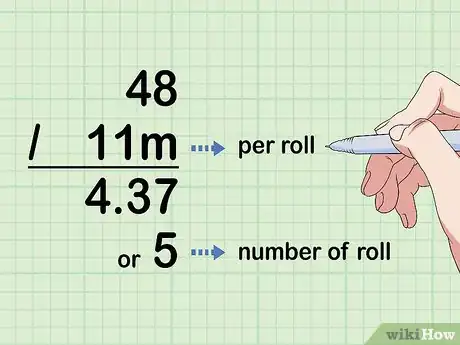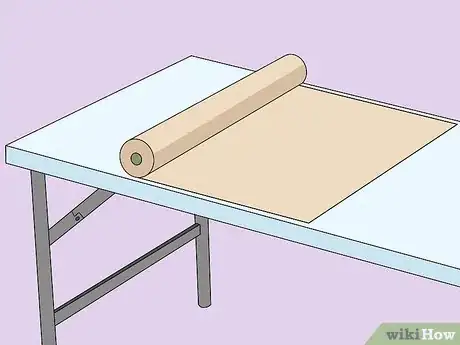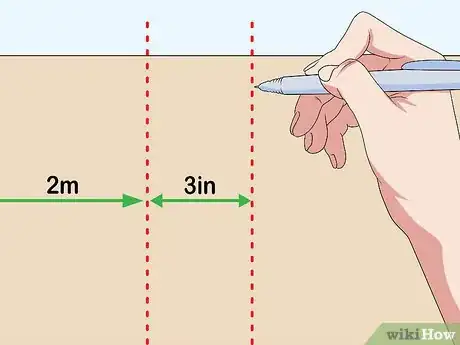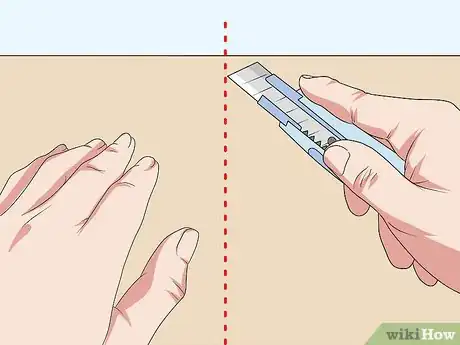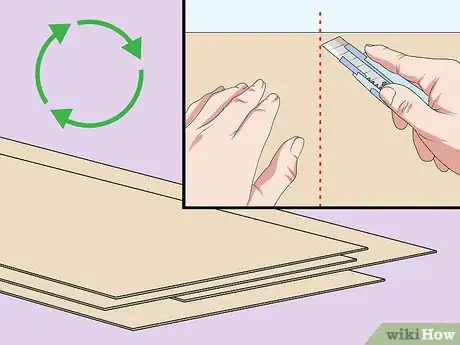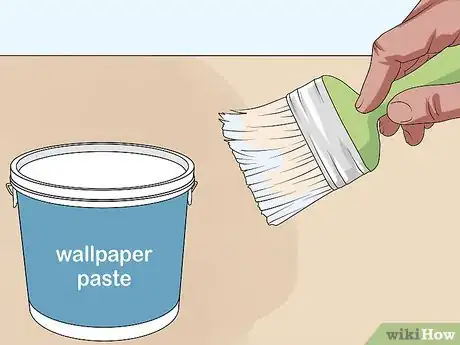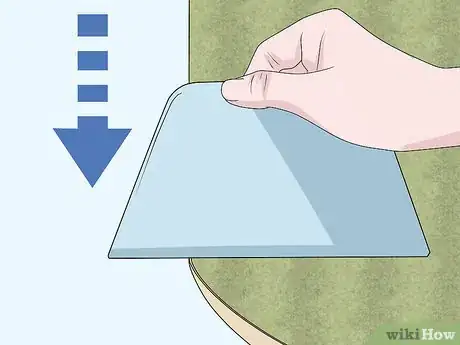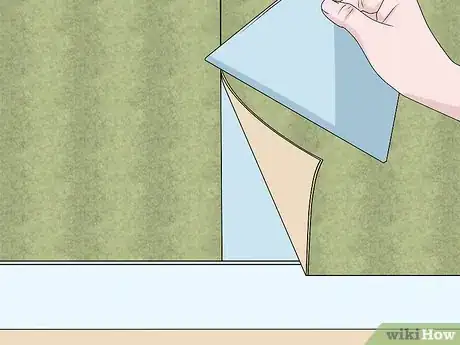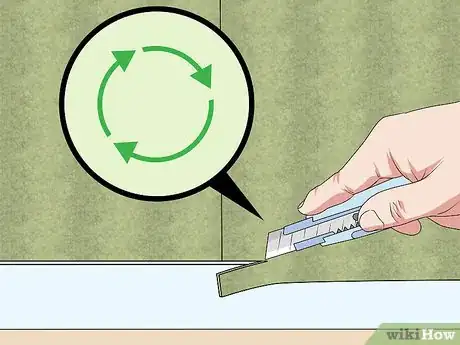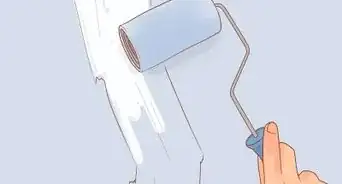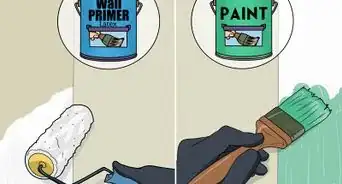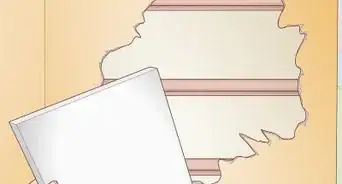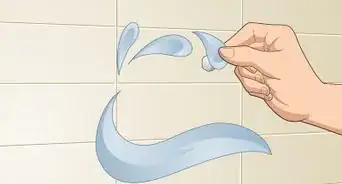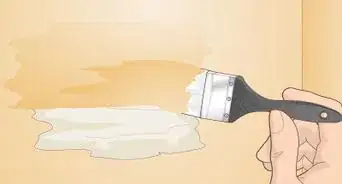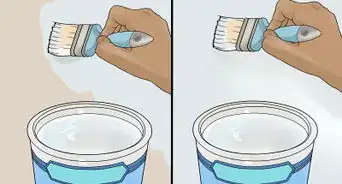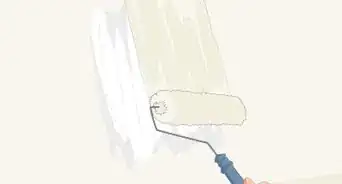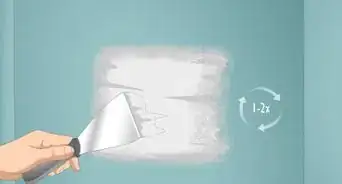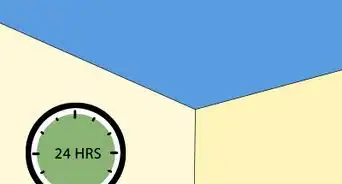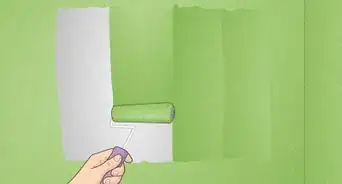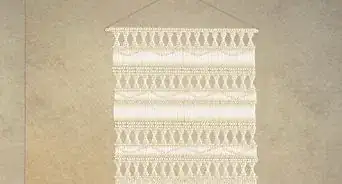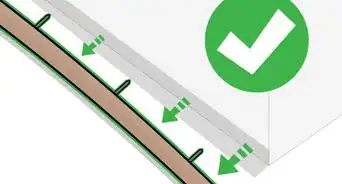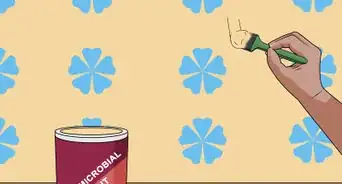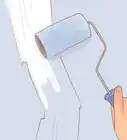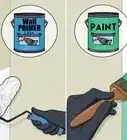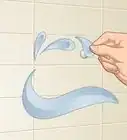This article was co-authored by Kanika Khurana. Kanika Khurana is an Interior Designer and the Owner of Kanika Design. With over 12 years of experience, Kanika specializes in remodeling, refurnishing, and color consulting. Kanika holds a Bachelor’s Degree in Psychology from San Francisco State University, a Redesign and Home Staging Certification, and an Associate Degree in Business Administration from Cañada College.
This article has been viewed 31,139 times.
Lining paper is a relatively easy way to cover up imperfections on walls and get them ready for painting. Choose different grades of lining paper depending on how bad of shape your walls are in and do some easy calculations to figure out how many rolls you need. Carefully cut and paste the lining paper onto the walls, then wait for it to completely dry before you paint, and in just a couple of days your room will be looking like new!
Steps
Calculating How Much Lining Paper You Need
-
1Choose a thicker grade of lining paper for walls with more imperfections. Lining paper comes in grades, or thicknesses, from 800-2000. The higher the grade, the thicker the lining paper. Use 1200-1400 grade lining paper if you are not sure what grade you need, as this will cover most average imperfections.[1]
- Lining paper is meant to cover pitting, cracks, and other imperfections in old walls and create a smooth surface to paint over.
-
2Divide the height of the room by the width of the lining paper. Lining paper comes in rolls of various lengths and widths. Measure the height of the walls and divide this by the width of the rolls you plan on using.[2]
- Keep in mind that wider rolls of lining paper will cover more space, but can be harder to hang.
Advertisement -
3Multiply the number you got by the perimeter of the room. Measure the total perimeter of the room including doors and windows. Multiply this number by the last number you got.[3]
- For example, if you were working with a room that's 2 m (6.6 ft) tall and has a perimeter of 14 m (46 ft), and your rolls were 0.6 m (2.0 ft) wide, you'd start by dividing 2 by 0.6 to get 3.4. Then, you'd multiply 3.4 by the perimeter, which is 14, to get 48.
-
4Divide this number by the length of the lining paper roll. Check how long the rolls of lining paper you plan on using are. Divide the last number you got by the length to determine how many rolls you need to cover the room.[4]
- In the previous example, you ended up with 48. So, if you were using rolls that are 11 m (36 ft) long, you'd divide 48 by 11 to get 4.37. Therefore, you'd need to buy 5 rolls of lining paper in order to cover the whole room.
- Always make sure you have about 10% more lining paper than you need to account for trimming.
Measuring and Cutting the Lining Paper
-
1Roll out a roll of lining paper on a pasting table. A pasting table is a folding table designed specifically for cutting and pasting things like wallpaper. Roll out your first roll of lining paper on the board to prepare to measure and cut it.[5]
- You can get a pasting table at a home improvement center if you don’t have one.
-
2Mark a section as long as the height of the wall plus a little extra for trimming. Use a tape measure to get the height of the wall again if you need to. Add 2–3 in (5.1–7.6 cm) to that measurement to get the length of the sections you need to cut. Use a pencil to make a line for the first section on the lining paper.[6]
- For example, if the wall is 2 m (6.6 ft) high, then you should cut sections of lining paper that are 2.05 m (6.7 ft) to 2.08 m (6.8 ft) long.
-
3Use wallpaper scissors or a trimming wheel to cut the lining paper. Make sure the lining paper is flat against the pasting table. Cut carefully along the mark you made to get your first section of lining paper.[7]
- You can get wallpaper scissors or a trimming wheel at a home improvement center or paint supply store.
-
4Repeat the process to get as many sections as you can out of a roll. Make a line for the next section to cut. Cut the second section and repeat the process until the roll is completely cut into strips of lining paper for you to hang.[8]
- You can do all the cutting at the beginning, or alternately cut and paste as you go. It’s up to you and how you prefer to work.
Pasting the Lining Paper to the Wall
-
1Apply wallpaper paste to the back of the lining paper with a pasting brush. Place your first section of lining paper flat on the pasting table. Cover the entire back, right up to the edges, with wallpaper paste.[9]
- Make sure to always refer to the instructions for the adhesive you are using before you apply it to check for any special instructions, such as how long you need to let the paste soak in.
- You can get wallpaper paste at a home improvement center or paint supply store.
-
2Smooth the first piece of lining paper onto the wall with a wallpaper smoother. This is usually performed vertically, place the first piece of lining paper on the wall (it’s easiest to start in a corner or next to a window) so that the extra length overlaps with the ceiling and where the wall meets the floor. Smooth out any air bubbles or creases with a wallpaper smoother.[10]
- If you start in a corner, let the lining paper overlap 1–2 in (2.5–5.1 cm) with the other wall there as well.
- Use the wallpaper smoother to push the lining paper right into the corners, where the extra length overlaps, to create creases.
-
3Cut along the creases with wallpaper scissors to trim off the excess paper. Gently pull back the lining paper where you creased it and cut carefully along the creases with wallpaper scissors. Push the lining paper back against the wall and smooth it out again if necessary.[11]
- Trimming off excess lining paper will ensure that it butts tightly up against the ceiling, at the base of the wall, and against the adjacent lining paper in corners.
- Put your wallpaper scissors into a jar of warm water when you aren’t using them to keep the paste on them from drying out and making them stick together.
- Apply the creasing and trimming technique anywhere else the lining paper meets with an obstacle, such as the wooden trim around windows or doors.
-
4Hang the next section of lining paper right next to the first one. Place the lining paper so the edges butt up tightly next to each other. Don’t overlap the edges or you will create an uneven finish.[12]
- Overlapping edges or too much space between sections of lining paper will show through a layer of paint.
-
5Repeat the process and work your way around the room until it is covered. Keep butting the lining paper up against the last piece you pasted without overlapping the edges. Trim the lining paper wherever you need to to make it fit.[13]
- You can apply paste to several sections of lining paper at once and loosely fold them over themselves (like a noodle) while you keep applying paste to more sections. This way you can get several sections ready to hang consecutively.
-
6Let the lining paper dry for at least 24 hours. Let the lining paper completely dry before you paint over it. It will blister and come off the walls if you paint on it while it is still wet.[14]
- Wallpaper paste dries within 24 hours in dry conditions, but takes longer if the room is damp or cold.
Things You’ll Need
- Lining paper rolls
- Tape measure
- Pencil
- Wallpaper scissors
- Wallpaper paste
- Wallpaper smoother
- Pasting brush
- Pasting table
References
- ↑ https://www.helpwithdiy.com/decorating/lining_a_wall.html
- ↑ https://www.helpwithdiy.com/decorating/lining_a_wall.html
- ↑ https://www.helpwithdiy.com/decorating/lining_a_wall.html
- ↑ https://www.helpwithdiy.com/decorating/lining_a_wall.html
- ↑ http://www.handymanknowhow.co.uk/decorating/lining%20paper.htm
- ↑ http://www.handymanknowhow.co.uk/decorating/lining%20paper.htm
- ↑ http://www.handymanknowhow.co.uk/decorating/lining%20paper.htm
- ↑ http://www.handymanknowhow.co.uk/decorating/lining%20paper.htm
- ↑ https://www.helpwithdiy.com/decorating/lining_a_wall.html
- ↑ https://www.helpwithdiy.com/decorating/lining_a_wall.html
- ↑ https://www.helpwithdiy.com/decorating/lining_a_wall.html
- ↑ https://www.helpwithdiy.com/decorating/lining_a_wall.html
- ↑ http://www.handymanknowhow.co.uk/decorating/lining%20paper.htm
- ↑ http://www.handymanknowhow.co.uk/decorating/lining%20paper.htm
